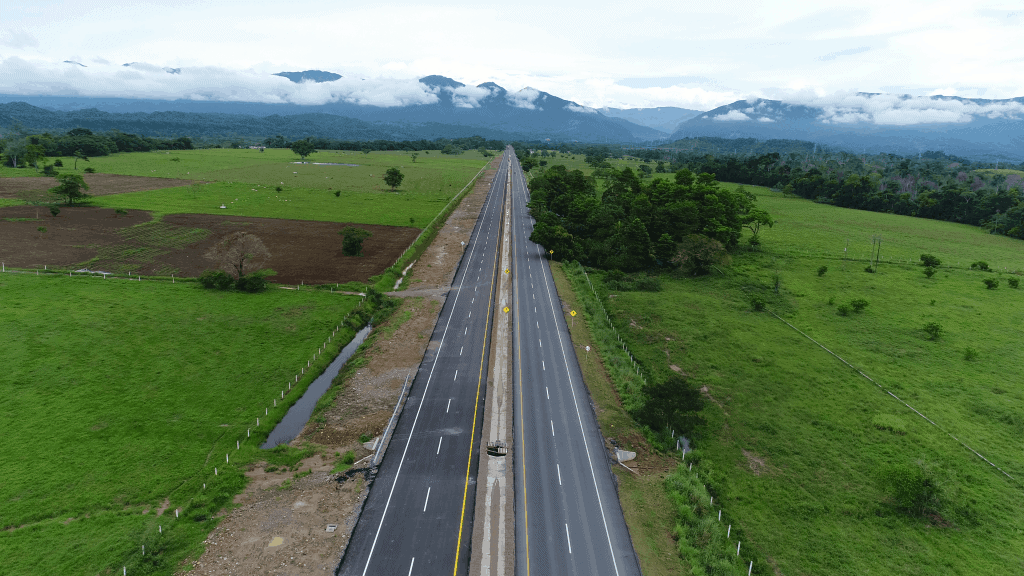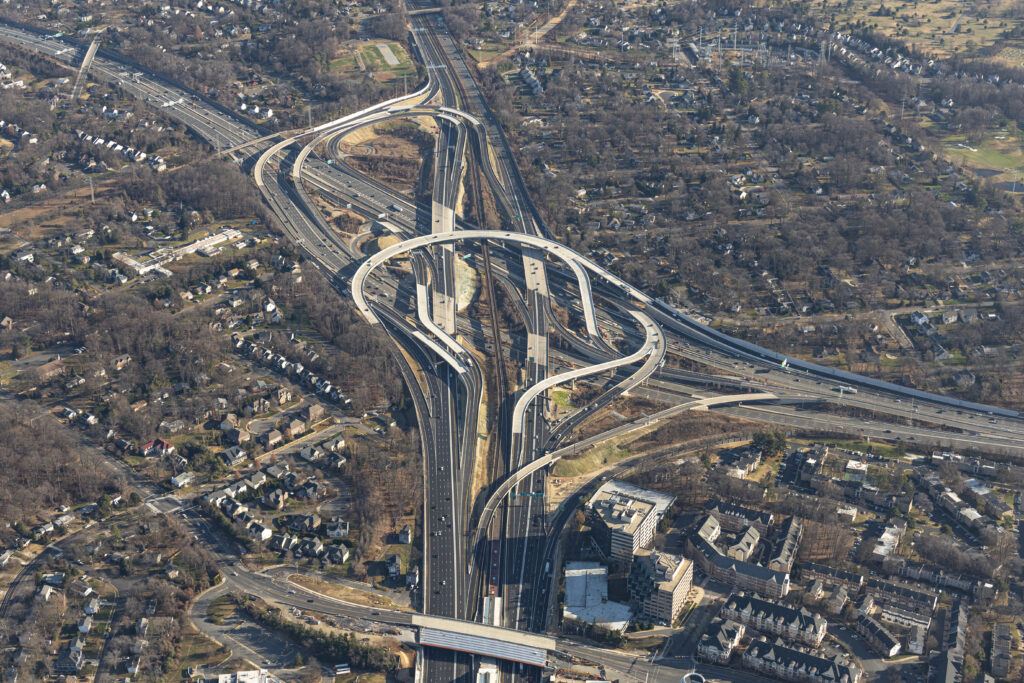Cintra
Connected to Nature
To mitigate natural risks, our Toll Roads’ division, Cintra, and our Core Portfolio adhere to our Sustainability Policy and support our Strategic Sustainability Plan and the Horizon 24 Plan.
These strategies have been thoughtfully developed to consider global-macro trends, social challenges, new mobility trends, technological factors, including the energy transition and digitalization, and environmental concerns like climate change, biodiversity loss, and public health.
Focused on 4 Key Areas
Decarbonizing our Portfolio
Developing efficient roadways that enable and enhance low-carbon mobility by minimizing congestion is just the first step in developing and operating sustainable infrastructure. Using less, more efficiently throughout the entire lifecycle not only benefits the communities we operate but can generate cost savings and protect asset value in the long run. To date, our decarbonization efforts have focused on three key areas:
Project Fleets (Scope 1)
Scope 1 emissions primarily reflect the vehicle fleets in use at our Core projects. In 2023, we began studying the optimal rate of EV adoption across the entire portfolio to aid in this transition. Factors such as the mix of owned and leased vehicles, where they are in their life cycle, and the availability of EVs that meet each project’s specific operational needs are considered. Current EV adopters, such as the 407 ETR, have given us useful data and real-life feedback to help guide decision making at other projects.
Project Energy Use (Scope 2)
Transitioning our portfolio to clean energy is key to mitigating scope 2 emissions. As of 2023, 70.5% of our Core projects have implemented 100% renewably sourced energy. In addition, 37.5% of our Core portfolio have installed solar panels to reduce grid dependency. In 2023, these panels generated 369,300 kWh of power for use in administrative buildings and maintenance facilities. In addition to sourcing renewably sourced energy, we are exploring ways to increase energy efficiency. To date, 71,5% of the lighting across our entire portfolio has been updated to LED. Read LBJ Solar panel story here.
Vehicle Emissions from Roadway Use (Scope 3)
Globally, 24% of greenhouse gas emissions are generated from the transportation sector. Of that, roughly four-fifths is generated from roadway vehicles. While the EV transition has been gaining traction at an accelerated pace over the last few years, the full adoption of EV and low carbon vehicles will take time. Until then, Cintra’s Managed Lane and multi-modal approach can support community members in choosing the most fuel-efficient option for their trips.
- Managed Lanes
Managed Lanes improve drivers’ fuel efficiencies, reducing personal emissions, through a number of innovative features. Thanks to the implementation of Intelligent Traffic Systems (ITS), toll rates are dynamic and can be modified every few minutes according to the level of congestion to provide drivers with improved fuel efficiency due to less deceleration, acceleration, and idling. The result is a decrease in emissions generated per vehicle mile traveled. Further, Cintra Managed Lanes meet minimum operating speed requirement as stipulated in federal law. - Multi-modal
We design and develop projects that promote integrated public transit options by providing toll exemptions for buses and park and ride sites to encourage and enable more sustainable practices by its users. HOV (High Occupancy Vehicles) drivers can take advantage of free or reduced fares as well, providing flexibility to drivers who want to carpool to reduce their carbon footprint.
Finally, hike and bike trails are integrated where possible to provide safe and connected active-transportation networks for community members who want to travel carbon free.
Climate Risk
Our global portfolio is located across multiple geographies, across a range of climates and terrains. That’s why climate considerations have been integrated into our risk management processes for some time. Our roadway projects include a considerable measure of resilience built in through decades of experience designing infrastructure across a variety of conditions. However, as climate change effects continue to accelerate, we are deepening our analysis of climate-related risks to evaluate and select the best adaptation measures to mitigate those risks:
- Physical Climate Risk
With the support of Ferrovial, Cintra’s parent company, and climate experts from the world-renowned University of Cantabria, we have been developing an approach that will help us assess the effects of the physical climate risks on our projects. This approach considers multiple time horizons and different climate scenarios, as outlined by the Intergovernmental Panel on Climate Change (IPCC). Adaptation measures are being explored to mitigate the projected impact of climate-related hazards, including preventative measures in design and maintenance, expanding insurance coverage, and emergency planning.
- Transitional Climate Risk
We utilize transitional climate risk assessment tools to support requirements under the Task Force on Climate-Related Financial Disclosures (TCFD). These tools assess the risks associated with transitioning to a low-carbon economy, including changes in regulations, legal, technology, and market conditions.
Biodiversity and Natural Capital
Biodiversity plays a key role in sustaining thriving communities. The responsible use of natural capital and conservation and protection of species and local ecosystems is critical in supporting economic and social wellbeing. Meeting local and federal regulated requirements is just the starting point of our approach.
We follow a Biodiversity Policy, that stipulates a no-net loss approach that helps mitigate and compensate for negative impacts. Our team integrates natural capital considerations into our risk management approach and work to incorporate nature-based solutions in the development and operations of our roadways.

Case Study: Ruta del Cacao
During construction, Ruta del Cacao highway carried out various measures aimed at protecting and promoting biodiversity.
Circular Economy
The circular economy is a systemic approach that supports the sustainable management of resources. The central principles: reusing and optimizing the use of materials and products, leveraging the regenerative capacity of natural resources and prioritizing value creation help to fight climate change, reduce greenhouse gas emissions, and improve biodiversity.
In addition to collecting and reporting on waste management data across its portfolio, projects follow ISO 14001 waste management standards, including evaluating, storing, and disposing of waste properly. To support its portfolio in their efforts, Cintra has developed trainings and guides to share best practices, innovative ideas, and drive broader awareness to this critical approach.

Recycling Roadways – How I-66 Repurposed its Rubble to Reduce Emissions
New and well-maintained roads offer drivers more than a smooth drive. They can reduce vehicle operating costs, vehicle crash rates, and improve the average speed travled. Traditionally, the installation of a new road or upgrade to an existing one means removing the old road materials, known as rubble. This process can generate greenhouse gas emissions from the removal and transportation of the rubble to offsite landfills.
